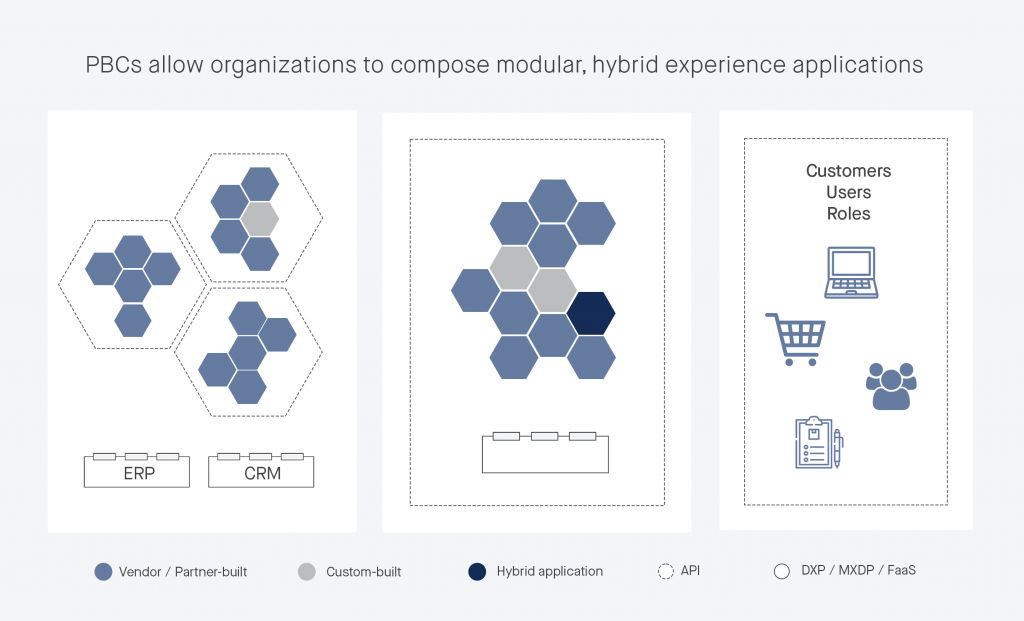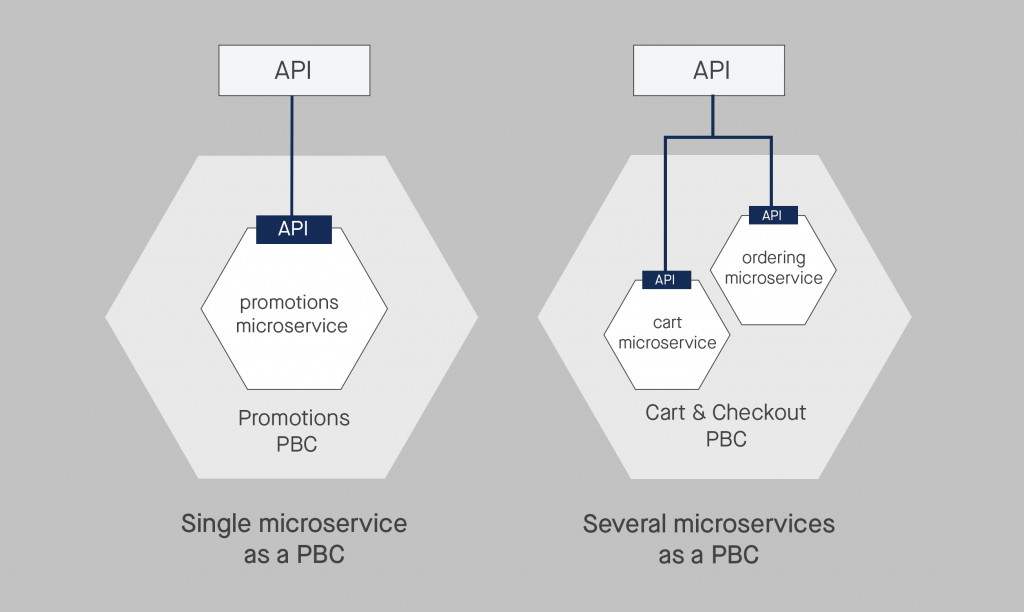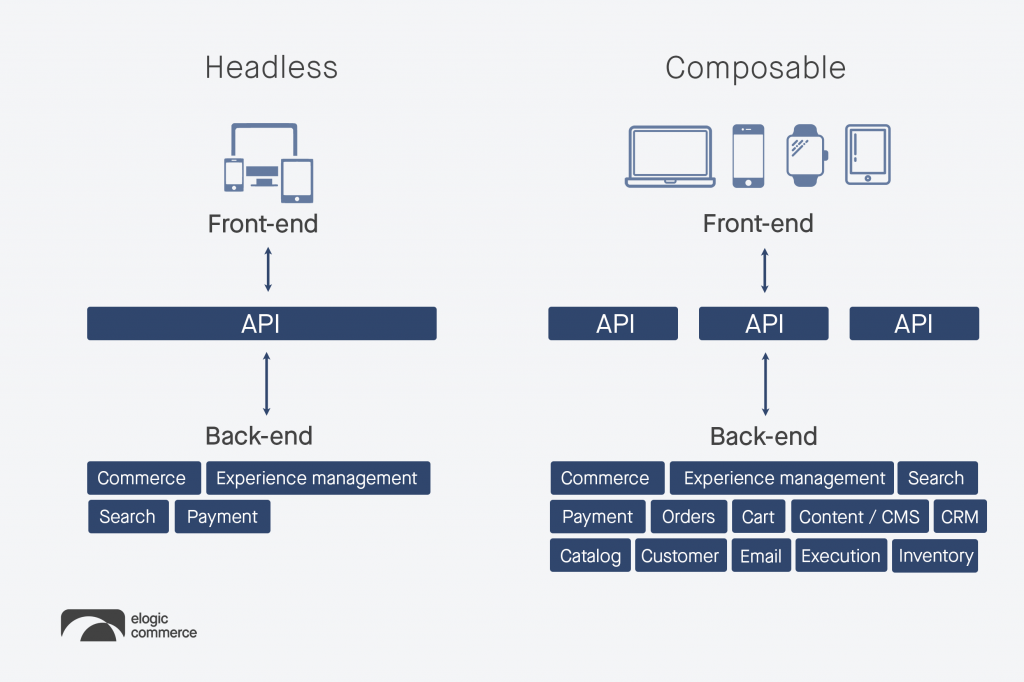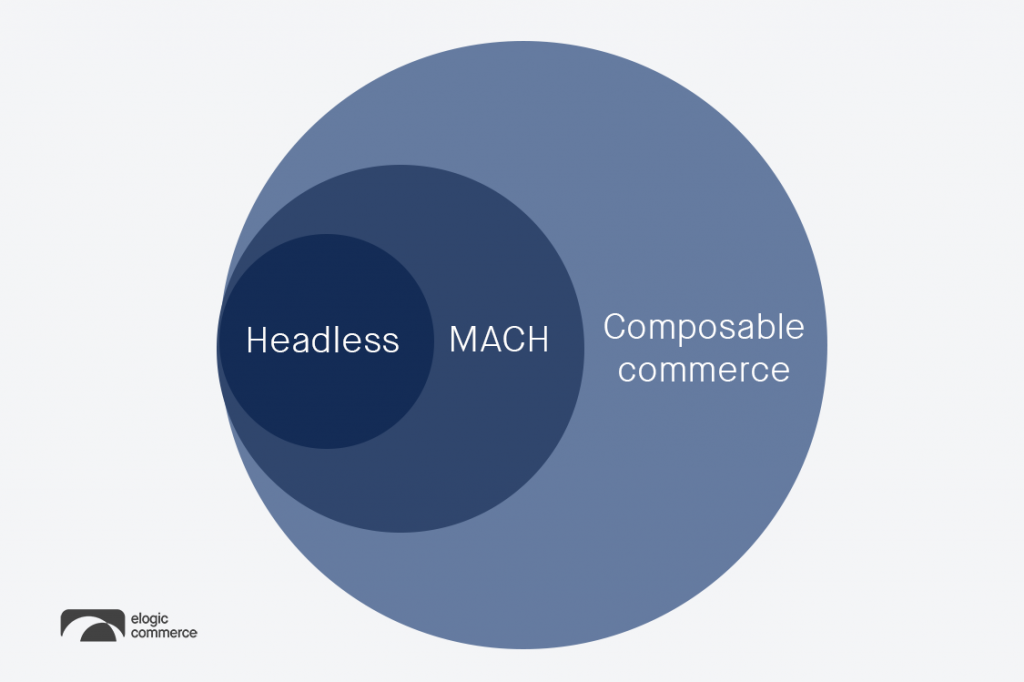Tired of trying to force-fit a one-size-fits-all platform functionality to match your unique business needs? Then, you might have come across composable commerce and commercetools when exploring your digital transformation options.
Composable commerce is a fresh, future-proof approach which allows you to choose best-in-class tools that meet your needs and build your ecommerce system like a LEGO puzzle. commercetools is often the go-to back-end platform that strives to replace traditional digital experience platforms (DXPs). It boosts business flexibility and scalability, optimizes TCO, and improves customer experience.
Despite those obvious advantages, you may still be wary of switching to composable architecture since it’s relatively new or you’re not sure if it’s effective. Or, perhaps, you’re concerned about hidden costs and new investments the switch may entail.
As a commercetools development company, we understand these concerns and address them in our daily work. So let us help you dispel your doubts by breaking down what composable commerce is, its main benefits, and the role of commercetools.
What Is Composable Commerce?
Composable commerce is a best-in-class strategy for building ecommerce solutions. Unlike vendor all-around platforms, composable commerce systems don’t limit your choice of tools, integrations, and technologies. Instead, you can pick your building blocks and combine them into one ecosystem.
Read more: Functional and Non-Functional Requirements for eCommerce Website
For example, your system may include a third-party application like Stripe for payment processing and a custom one for ERP.

Composable commerce architecture consists of packaged business capabilities (PBCs). Every PBC is a self-contained application serving a specific purpose, like handling taxes, shipping, or CRM. Often confused with microservices, PBCs are more extensive in scope and can consist of several of them.

Composable commerce is best defined by its four core tenets:
- Flexibility. You’re entirely in charge of your solution’s features and their implementation. Thanks to the modular approach, you can quickly tweak them to adapt to new market realities.
- Business-centricity. You don’t adjust your business operations to your system and its limitations. Instead, your business needs and goals dictate your system’s functionality. That’s why PBCs rely heavily on a business purpose, by definition.
- Modular architecture. You can add, replace, change, or remove one PBC without disrupting the whole system. The frontend and backend are decoupled. As a result, you can tweak or revamp the customer presentation layer without changing the backend.
- Open ecosystem. You can forget about vendor lock-ins with composable commerce. You’re free to use any tools, custom or third-party, as your building blocks. Any tool can be easily replaced if you outgrow it or find a better one.
Composable Commerce vs. Headless Commerce: One and the Same Thing?
Composable and headless commerce are similar concepts, but they aren’t the same. Yes, both ensure decoupling the frontend from the backend. However, headless commerce doesn’t necessarily imply a modular approach to architecture – and that’s the main difference between these approaches.
Read more: Best Headless Ecommerce Platform — Full Guide
For example, with headless commerce, you can use Next.js for your decoupled frontend, while the backend remains on Shopify. Thus, vendor-specific limitations don’t necessarily vanish.
While headless does offer greater scalability and flexibility, the level of independence between components isn’t as high as in composable commerce. In headless solutions, only the frontend and backend are decoupled. In composable commerce, both the frontend and backend can be further split into PBCs.
Simply put, all composable commerce solutions are headless, but not all headless systems follow the composable commerce tenets listed above.

Many also confuse MACH architecture and composable commerce. But they’re not the same, as well. MACH architecture is just one way to implement composable commerce through its four main principles: microservices, API-first, cloud-native, and headless.

4 Key Composable Commerce Benefits
Let’s break down the four most significant benefits of composable commerce adoption.
Quick deployment, integration, and time-to-market
The modular approach toward the backend allows you to develop new PBCs, integrate different tools, and replace existing ones, promptly expanding your system’s functionality. Moreover, the composable approach to ecommerce systems also speeds up MVP development. For example, Bikes.de managed to launch one in under 100 days.
Tamron Europe is another example of composable commerce and commercetools speeding up deployment. The company implemented this approach within just two months. Salling Group, in its turn, accelerated its release cycles to multiple times a day.
Lower TCO
Monolith systems’ complexity blows maintenance and upgrades costs out of proportion. Under composable commerce, however, maintenance and updates are less costly. That’s because you make them within PBCs, without disrupting the rest of the system.
With no-vendor lock-ins, you can also select the tools with the best price-quality ratio for your system, optimizing your TCO. For example, commercetools helped Elogic industrial manufacturing Client reduce their total cost of ownership by 25%.
Personalized omnichannel customer experience
Composable commerce allows for launching multiple touchpoints so you can reach your customers where they are. For example, Volkswagen approaches clients using its brand websites, mobile app, and vehicle software. This way, you can craft smooth omnichannel customer experiences.
The best-in-class strategy also lets you add complex customer experiences using cutting-edge tools, such as personalization based on real-time data. And thanks to the inherent flexibility of composable commerce, you can quickly roll out new features to improve CX.
Global sales
Operating in multiple markets comes with particular challenges. And most often, out-of-the-box platforms aren’t ready to face them. You should customize your storefronts for each market, present disparate product pricing and shipping, and adapt to tax legislation.
Thanks to the independence of the frontend and backend, these goals can be easily achieved with composable commerce. You can also add multiple integrations with shipping operators and other location-specific third parties.
For example, Berlin Brands Group used commercetools to launch customized brand websites in ten individual markets. Composable commerce allowed the company to efficiently juggle multiple unique brand experiences, currencies, and languages.
How commercetools May Sustain Your Composable Commerce Efforts
commercetools is a backend provider and a top-rated composable commerce platform for digitally mature enterprises. It’s been named a Gartner Magic Quadrant Leader three years in a row.
Read more: commercetools Pricing: How Spending Now Will Save Your TCO Later
The main features of commercetools include:
- Product information management (PIM). That’s where you can view and manage all product data, including its types, attributes, variations, options, and categories. PIM features also include inventory and pricing management.
- Carts and orders. With commercetools, you can sync carts, orders, and shopping lists across devices and support country-specific tax requirements.
- Merchant center. This function gives you control over orders and shipping. It also enables customer, store, and channel management. Finally, you can handle discounts and manage projects and user permissions.
- 300+ commerce APIs. commercetools offers APIs for hundreds of best-in-class B2C and B2B composable commerce tools. This way, you can add them to your digital ecosystem hassle-free.
And here are the four key reasons why enterprises choose commercetools as their backend provider for composable commerce systems:
- Improved performance. The cloud-native approach mitigates both unexpected and planned downtime. It also includes continuous update delivery (CD). For example, Audi increased its uptime to 99.99% with commercetools.
- Flexibility and scalability. Your cloud-native system automatically scales during traffic spikes. You can select any of over three hundred commerce APIs or add custom PBCs for your particular needs.
- Decreased operational costs. commercetools brings down maintenance and upgrade costs. Also, it reduces technical debt, and eliminates vendor lock-in costs. Check out the story of our client, the B2B industrial manufacturer, at Elogic who used commercetools to decrease operational costs by 25%.
- Increased order value. Improved performance and customer experience boost conversions and sales. For instance, 66°North’s average order value increased by 35% after switching to commercetools.
3 Ways to Move to Composable Commerce Architecture
If you’re thinking of migrating to composable commerce, take a look at the three most effective ways to do it.
Decouple your existing monolithic architecture
If you opt for decoupling, you need to cut your frontend away from your backend. Then, your solution becomes headless, but there’s a caveat: your backend doesn’t magically become modular. Instead, it’s still monolithic, with all the downsides in place.
With decoupling, you get to preserve your existing functionality with minimum costs and disruptions. But, on the other hand, updating and tweaking your business logic will remain as complex as it was. So, it’s better to consider this option only as a stopgap in your digital transformation journey.
Use the “Big Bang” approach
If you choose this option, you keep your monolith system running while your developers build a new one from scratch. The composable commerce solution is rolled out on day X in its entirety.
The “Big Bang” way to make the transition comes with several potential pitfalls:
- Your soon-to-be-legacy system will be available for months, while the development goes on.
- On launch day, you risk facing unpleasant surprises like compatibility issues.
- You should plan the development and rollout meticulously. However, note that those plans rarely match reality due to the project’s complexity.
Migrate in phases
With phased migration, you select the core components to migrate first and switch them out for PBCs. The transition happens piece by piece until you replace your monolith system with a bare-new composable commerce solution.
Read more: Replatforming Ecommerce: Complete Migration Guide
Thanks to this approach, you can test your composable commerce strategy and tweak it if necessary. This way, you can address potential risks and disruptions. Plus, you won’t have to wait months to start reaping the benefits!
Composing Your Commerce Is Easier with Certified Partners
Composable commerce is your must-go-to strategy if you want to future-proof your enterprise and keep it up with rapidly shifting market conditions. With its help, you can also reduce your TCO, boost time-to-market, and deliver a seamless omnichannel customer experience. Moreover, it opens up an opportunity to operate in multiple geographical markets.
However, switching from a monolith platform solution to a composable commerce one is a massive undertaking that requires specific expertise. Otherwise, you risk exceeding the budget, setting unrealistic deadlines, and implementing the new infrastructure inefficiently.
If you lack the necessary in-house expertise, we would gladly lend you ours. Elogic is a certified commercetools partner with experience in migrating and replatforming 100+ brands of all niches and sizes. You can learn more about our commercetools expertise from our Enzio Manufacturing success story or reach out to us to discuss your composable commerce needs in detail.
Let us help you ditch your legacy system and make a smooth transition to commercetools
Learn moreComposable Commerce FAQs
How is composable commerce different from traditional ecommerce?
Traditional ecommerce locks you into a one-size-fits-all platform. Your vendor limits the functionality and integrations you can add to your solution. Also, a standard ecommerce system is monolithic. The backend and the frontend are tightly interconnected, making changes harder to implement.
In contrast, composable commerce uses a modular approach toward software architecture, with PBCs (packaged business capabilities) as your building blocks. You can combine any custom and third-party tools into PBCs, without vendor or tech stack limitations. Moreover, your backend and frontend are decoupled. So it’s easier to adjust your solution to markets and customers.
Why is the future of ecommerce composable?
Composable commerce is more than just one of the 2023 ecommerce trends. It’s here to stay. There are three main reasons for that:
- It offers better scalability and flexibility than traditional approaches. And that’s vital for adapting to market and customer preference changes.
- It lowers the total cost of ownership (TCO) by minimizing upgrade and maintenance costs and eliminating vendor lock-in losses.
It boosts return on investment (ROI). Thanks to composable commerce, you can seize new opportunities, improve your teams’ productivity, and enhance customer experience.
How does commercetools benefit my business?
Here’s what commercetools can do for your business:
- Improve your system’s performance with the cloud-native approach, continuous delivery, and automatic scaling.
- Give you the tools (including over 300 commerce APIs for best-in-class solutions) to create your unique omnichannel digital ecosystem.
- Decrease operational costs by as much as 75% and increase average order value through an improved customer experience.


